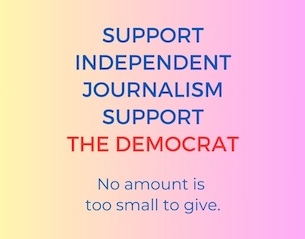- More
- Rejection of Abhidhamma : Bhikkhu Revata
Rejection of Abhidhamma : Bhikkhu Revata
Question: Bhante said that to check whether or not a teaching is true Dhamma, we need to compare it with the Tipiṭaka – the Suttanta, the Vinaya, and the Abhidhamma. But I recently heard from an ordained person that he refused to learn the Abhidhamma because the Abhidhamma is not the teaching of the Buddha.

Question: Bhante said that to check whether or not a teaching is true Dhamma, we need to compare it with the Tipiṭaka – the Suttanta, the Vinaya, and the Abhidhamma. But I recently heard from an ordained person that he refused to learn the Abhidhamma because the Abhidhamma is not the teaching of the Buddha. He said that before the Buddha’s Parinibbāna, the Buddha said that only the Dhamma and the Vinaya would be our teacher. So if an ordained person has such wrong view, lay people like us may follow the wrong way.
Answer: What is the first insight knowledge? The first insight knowledge is the knowledge of discerning ultimate mentality and materiality – in Pāḷi, nāmarūpaparicchedañāṇa. The Vinaya, the Abhidhamma, and the Suttanta are the three baskets, the Tipiṭaka, of the Buddha’s teaching. In the Suttanta, the discourses, the Buddha explained the Dhamma according to the inclination of the audience. The Buddha was supremely skilful in teaching the Dhamma. He would choose the right words to say to the right persons. The Buddha profoundly understood how to teach, when to teach, and whom to teach. Discerning the capability, the inclination, and the pāramī of individual persons, the Buddha would expound the Dhamma in the way each person could understand. Such expositions of the Dhamma are what is recorded in the Suttanta.
But in the Abhidhamma, there is no such focus on any particular beings. It imparts the truth that is universal truth. Only the Abhidhamma deals with such comprehensive truth, analysing all the possibilities and impossibilities of mentality and materiality that different beings can possess. The Buddha analysed all the mentality and materiality that can possibly arise in a certain being according to the realm and according to the particular being. In humans, the number of materialities subsists in twenty-eight types of rūpa, but since men and women each possess only the male sex-decade kalāpa or the female sex-decade kalāpa respectively, each human being possesses twenty-seven types of rūpa. To attain rūpa- pariggaha-ñāṇa, the knowledge of discerning ultimate materiality, we need to discern all twenty-eight types of rūpa, both internally and externally. If we fail to discern them, then we fail to discern ultimate materiality, numbering twenty-eight types of rūpa altogether. Lacking such discernment, can we be said to attain the knowledge of discerning ultimate materiality?
What about mentality? The Buddha taught eighty- nine types of citta and fifty-two kinds of cetasika. He also taught rūpa jhāna-dhamma and arūpa jhāna- dhamma. All the akusala citta (unwholesome citta) and kāmāvacara kusala citta (sensual wholesome citta) will arise in all of us. Hence, when you feel greedy and want something or crave something, the mentalities that arise will number twenty altogether if it is associated with pleasant feeling. When you get what you want, you feel happy, don’t you? Who taught this? Where you can find this teaching? Only in the Abhidhamma. The Buddha has counted the number of mentalities that may arise in our minds. If the mind state is associated with pīti, it will be twenty. Sometimes you get what you want, but you don’t feel happy. The Buddha said sometimes lobha arises without pīti, in which case the total mentality in the mind is nineteen. Who can teach this? Only the Buddha, and only in the Abhidhamma.
The Buddha said in the Abhidhamma that this whole world is made up of very small particles. Where did the Buddha say this? In the Abhidhamma. When you practically engage in four elements meditation, at a certain time you will break your body down into very small particles. If you pay attention with four elements meditation to living and non-living things, both internally and externally, you will see that everything around you is just tiny particles. The Buddha said there is no man, there is no woman. There are no living or non-living things. There are only very small particles. The Buddha said that, to be able to see them, you need to practise four elements meditation. When you practise four elements meditation, you will develop concentration. When you develop concentration, your body will emit light. If you continue discerning four elements in your whole body, it becomes a block of bright light. If you continue to discern four elements in the block of bright light, you will break it down into its components. You will break the block of bright light down into very tiny particles. At that time, you will agree with the Buddha. You will not argue with the Buddha.
The Buddha said that the very small particles are not yet ultimate materiality. They are just the smallest concepts. You need to analyse the ultimate materiality existing in each particle, such as earth, water, fire, wind, colour, smell, taste, nutritive essence, life faculty, and sensitivities. According to the Buddha’s Abhidhamma, in the eye door there are eye- sensitivity decade kalāpa, body-sensitivity decade kalāpa, male or female sex decade kalāpa, as well as mind-born materiality, nutriment-born materiality, temperature-born materiality, and life nonad kalāpa. Seven kinds of rūpa exist in the eye door.
Now I will let you reflect and let you understand whether what the Buddha taught is really true or not. When you look at something and see it, why do you see it? Because you have eye-sensitivity. Visible objects can impinge on the eye-sensitivity. Only at that time will seeing consciousness, or eye consciousness, arise. Please touch your eye. Do you feel the touch? Why? Because there is body-sensitivity. Do you see the differences between the eyes of a female and the eyes of a male? They are different! You may have been unaware of the difference before now, but they are different! This is because of female bhāva rūpa (sex materiality) or male bhāva rūpa in their respective eyes. When a man looks at a man, when a female looks at a male, when a male looks at a female, when a female looks at a female, you will see the difference. Why is there a difference? Because of bhāva rūpa. The way men move, the way men act, and the way women move and act – are they the same? The Buddha said that the female bhāva rūpa spreads throughout the body of the female. Male bhāva rūpa exists throughout the body of the male. So it is different. It distinguishes the appearance and the actions of a male from a female.
This difference is due to bhāva rūpa. Bhāva rūpa exist in every door. Where can you find this teaching? Only in the Abhidhamma.
Until less than two hundred years ago, scientists regarded the atom as the smallest unit of materiality. At the end of the nineteenth century and the beginning of the twentieth century, scientists acquired the ability to split an atom into neutrons, protons, and electrons. Neutrons, protons, and electrons are called sub-atomic particles. Scientists could split the atom into protons, neutrons, and electrons only at the end of the nineteenth century and the beginning of the twentieth. Long before that, the Buddha had discerned that the whole world is made up of very small particles. He had done so without instruments, without a laboratory, and only with His concentration. How long ago? Two thousand six hundred years ago. What is the molecular formula of drinking water? H2O. Two hydrogen atoms and one oxygen atom. This is what the scientists say. The Buddha said water is made up of eight kinds of materiality. The Buddha’s analysis went further and deeper than does that of scientists, even in the absence of any instruments. Scientists cannot analyse ultimate materiality. They just know materiality in a superficial way. All these teachings of ultimate reality appear in the Abhidhamma.
In Thailand, there are groups which reject the Abhidhamma and the commentaries. Among ordained persons, one group does not accept the Abhidhamma and the commentaries. Another group accepts the Abhidhamma and the commentaries. For this reason, conflict arises. The commentaries explain how to practise meditation, and how to know and see the Dhamma deeply as they really are. Before you study the Abhidhamma, please read the teachings of the Buddha in the Suttanta. Then study the Abhidhamma thoroughly. After that, read the suttas again, and you’ll find that your understanding has changed completely.
Because of the Abhidhamma, the Buddha is called the Omniscient One. If you ignore the Abhidhamma teachings and read just the Suttanta, you don’t see how special the Buddha’s knowledge is. The Suttanta alone does not convey such profound understanding. In the Abhidhamma, however, the knowledge is very deep and profound. No ordinary people could formulate it. Only an Omniscient Buddha could do that. If you study Abhidhamma thoroughly, you will realise how deep and how profound the knowledge of the Buddha is.
Do you know the Maṅgala Sutta? There is a sentence in it that reads, ‘Asevanā ca bālānaṃ, paṇḍitānañca sevanā’ – ‘Please don’t associate with fools; please associate with the wise.’41 Those ordained bhikkhus who reject the Abhidhamma are very unfortunate. This problem occurs because of their teachers, because those bhikkhus associate with teachers who don’t really understand the teachings of the Buddha. Under the influence of their teachers, they continue on their way, not knowing that what their teachers are teaching is not in accordance with the Buddha’s teachings. In this way, without bad intentions, they have inadvertently associated with fools. Along these lines, in a certain existence when the bodhisatta was fulfilling pāramī, he made an aspiration and said, ‘May I not meet with a fool. May I not hear from a fool. May I not associate with a fool. If I need to converse with a fool, may I not take delight in his speech, and may I not follow and act according to his speech.’42 This is very important! We all should make this aspiration. And the bodhisatta continued his aspiration as follows: ‘May I meet with the wise. May I hear from the wise. May I associate with the wise. May I converse with the wise and take delight in his speech, and may I follow and act according to the instructions of the wise.’43 This also is very good and very important.
Sometimes we are not ready to listen to the wise. This is something that happens with all of us in life. Often we meet with fools, we speak with them, and we enjoy speaking with them. Sometimes we meet with the wise, but we feel doubt. We look at the wise with strange eyes. We think, ‘My point of view and his point of view are not the same. What is he saying?’ Rooted in your ego, you want to deny, you want to disagree, you want to object, you want to oppose. Hence we all need to be careful. We all need to be wise. We all need to make an aspiration like the one the bodhisatta made in one of his existences.
In the Theragāthāpāḷi there is one stanza that reads, ‘Who knows, knows who knows. Who knows knows who doesn’t know. Who doesn’t know doesn’t know who doesn’t know. Who doesn’t know doesn’t know who knows.’44 Which are you – the one who knows, or the one who doesn’t know? Remember, then: Who doesn’t know doesn’t know who doesn’t know. Who doesn’t know doesn’t know who knows.











